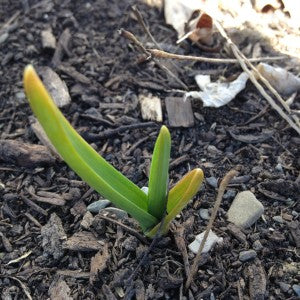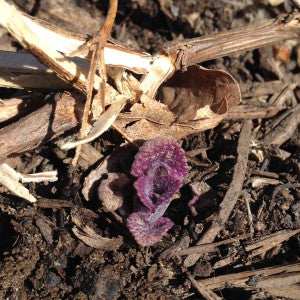
Sow What Now in April
Although spring officially starts in March, around here, April is the true bearer of news that a green growing season is upon us. The season's wild pioneers like skunk cabbage, field onions, dandelions, and garlic mustard signal that the days are finally long enough and the sun warm enough to support new growth. In the garden, perennial herbs like lovage, sage, chamomile, and anise awaken and wave their tiny new leaves in the in strong, spring gusts. Garlic emerges alongside the hardiest greens like mache, spinach, and arugula. As the month progresses, despite unpredictable weather and risk of frosts, trees fill with showy blooms, the air with their floral fragrance and buzzing bees and before May, the world is green again. The garden to-do list is suddenly full and sowing opportunities abound. It's hard to ignore spring's not-so-subtle hints to get outside and start growing. Here are some sowing ideas and garden chores to prioritize this month:
Answer springs #1 question: When is soil ready to be worked? As new seeds start to fill our homes, it’s harder and harder to stay patient and resist the countdown to the first outdoor sow date of the year. You can begin sowing in late winter or early spring--but not until the soil is ready. Many cool-weather crops, such as spinach, peas, arugula, and hardy salad greens, benefit from being sown as early as possible. Germination may take a bit longer than under warmer conditions, but they'll be off and running early, which means the plant has the maximum amount of time to grow before summer heat sets in. However, it's important to wait to sow until the soil has recovered from the winter freeze-up and has returned to a friable, arable state. You're looking for the top several inches to be dry and crumbly enough that the soil doesn't stick as you run a tool across the surface but instead falls away in small chunks or crumbles*. Clay soils can sometimes take 1-2 weeks longer than sandy soils to become planting-ready. As you continue to add organic matter to your soil over the years, it will become lighter and lighter and more easily worked at the start of the season.
To see what else you can sow now, see our Sow for Spring page.
Build a Quick and Easy Cold Frame
3 Uses for Row Covers in the Spring Garden
Clean up: Perennial herbaceous plants (many herbs, asparagus, rhubarb) grow anew every year. If you haven't yet removed old, dried stalks from last season, now is the time. Cut them a couple of inches above the ground and compost the rest. April is also when we start to see volunteer annuals popping up around the garden: varieties that sowed themselves in the past growing season. If you want to transplant them to a different section of the garden, simply wait till the plant grows at least its first set of true leaves and do it during a string of days where there is no frost in the forecast. If you don't want to keep them, treat them as a weed, or spring's first amuse-bouche. Discard any volunteer nightshades! Overwintered tomato, pepper, or eggplant seedlings have a greater chance of carrying disease than other plant families, so it is best to start such varieties from seed.
 Hello, garlic!
Hello, garlic!Tend to garlic: In the spring, when temperatures rise and the ground begins to thaw, remove the mulch off to the side to help warm the soil. Replace the mulch around the garlic plants once the weather has warmed to help suppress weeds. Alternately, prepare the garden bed, insert the cloves into the ground until they are just covered, and apply a 2-3” layer of rich, organic compost on top. Mulch with straw in the spring, after the garlic has emerged.
Ready the tools: A gardener without reliable tools is a gardener with empty hands. And, with empty hands, tasks like prepping beds, planting, harvesting, weeding suddenly seem impossibly hard. Don't start the season empty-handed! Clean, sharpen, and fix your garden tools. Here's how.
Compost: Before cleaning up overwintered garden debris to add to your compost pile, turn your pile, removing (and screening) any finished compost. The finished product can be used to top-dress beds when you prepare them for the main growing season.







